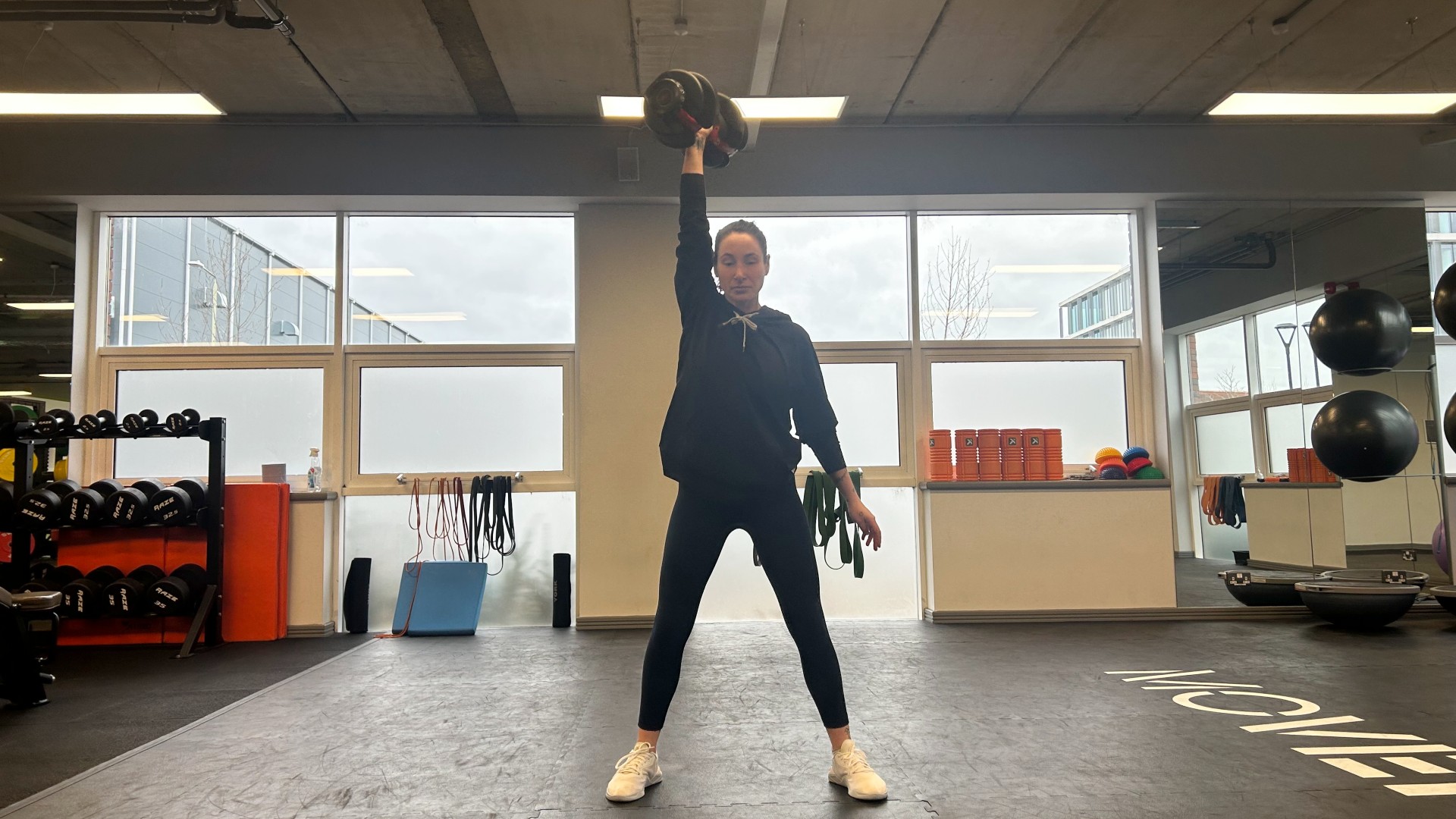
The devil press gets its name for good reason — it was dredged up from hell. For a reason still unknown to me, I decided to do 50 reps of the exercise every day for a week.
This full-body strength exercise requires a set of the best adjustable dumbbells, but you can also practice the single-arm variation using one weight. The move, popular in functional training and CrossFit-style workouts, is a high-intensity muscle torcher that builds strength and endurance, increases your heart rate and improves movement efficiency.
I love a fitness challenge, but the devil press still works me to my limit. Here’s what happened when I grabbed some dumbbells and jumped into the challenge feet first for one week.
How to do the devil press
If you haven’t tried the exercise, use two light dumbbells until you feel comfortable with the movement pattern. The devil press combines a chest-to-floor burpee with a double snatch, so here’s a breakdown of each step.
- Start with both dumbbells just in front of your feet, shoulder-width apart in a neutral grip position.
- Engage your core, grip both dumbbells. Jump back into a high plank position.
- Lower to the ground between the dumbbells as you would during a burpee with your chest and hips aligned.
- Press back up, then jump both feet behind and just wide of the dumbbells.
- Lift your chest, pull both shoulders down and maintain a flat back.
- Hinge your hips, send your bum behind you and swing both dumbbells through your legs like a kettlebell swing.
- Pop your hips forward, extend your legs and swing the dumbbells upward while bending both elbows toward you.
- Push the dumbbells overhead and lock both arms straight at the top.
- Reverse these steps back down to swing the dumbbells through your legs, then replace them into their starting position on the ground in front of you.
You can perform the move using one dumbbell for a single-arm devil press variation. Remember to keep the hip hinge snappy as you thrust the dumbbells forward to drive them overhead.
I did 50 devil press every day for a week — here’s what happened
Here’s how it went down.
My entire body hurt
It goes without saying that this popular strength and conditioning exercise torches every major muscle group. The devil press hits your back, shoulders, chest, core, glutes and leg muscles in two combo moves — the burpee and dual dumbbell snatch.
Get instant access to breaking news, the hottest reviews, great deals and helpful tips.
It’s a technical compound exercise that raises your heart rate and tests your speed, strength and endurance. It’s tough to do for high reps, which is why it’s a CrossFit staple, so I decided to complete between 8-10 reps every minute on the minute (EMOM) until I hit 50 reps. That way, I could hold myself accountable to a time cap and scale where necessary.
After the first few days, I was feeling the DOMS.
I lacked power
The devil press requires a hip hinge and explosiveness, just like performing a kettlebell swing and snatch. That means developing snappy power through your hips as you thrust forward to drive the weights upward.
Toward the end of my daily reps, I began losing momentum, a sign of fatigue. I decided to drop down in my dumbbell weight and focused strictly on form, removing my ego from the equation so that I could feel the exercise in the places I should.
It’s easier than you think to shift into your lower back during the burpee and swing phases of the devil press, so make sure you squeeze your stomach and glutes as you move.

I still felt powerful
I have a perverse secret love for the devil press — it makes me feel strong and confident. The move is a brilliant stress reliever, and the high intensity allows you to throw some pretty heavy weight above your head — with control and practice. My muscle groups always work hard during the devil press, and I always enjoy it afterward.
I notice this exercise mostly in my posterior chain muscles, notably my back, glutes, hamstrings and core. The move requires core strength and full-body power to drive the weight upward, rather than relying on your arms to achieve the lift.
Besides, there’s nothing like the endorphin release after a full-body burner. And one study found that high-intensity exercise lasting just 10 minutes a day for 12 weeks could positively affect cardiometabolic health compared with endurance training in subjects.
I needed a break
Whenever we do a fitness challenge at Tom’s Guide, we try to reiterate how important rest and recovery are. The same applies here. When you exercise, your muscle fibers develop tiny micro-tears, and when you rest, your body rebuilds and releases the growth hormone, which helps muscles to recover, adapt and grow.
Make sure to factor in rest or active rest days to counteract the effects of training on your muscles, and avoid consecutive days isolating one muscle group, which could lead to overtraining and injury.
Verdict
After accumulating 350 reps of the devil press, I decided to increase my yoga intake for the next week. If you’re confused between yoga vs Pilates, we cover some benefits of both, here. And these 6 stretches for beginners boost flexibility in your hamstrings, calves and ankles. If you suffer from tight lower-body muscles, these could help you perform the devil press with better efficiency and less chance of injury, particularly in your back and hamstrings.
More from Tom's Guide
- I did 12-minute reverse planks every day for a week — here's my results
- I'm a personal trainer and this is the most underrated gym equipment for building strength
- Forget planks, this ab workout sculpts your core in 4 exercises

Sam Hopes is a level 3 qualified trainer, a level 2 Reiki practitioner and fitness editor at Tom's Guide. She is also currently undertaking her Yoga For Athletes training course.
Sam has written for various fitness brands and websites over the years and has experience across brands at Future, such as Live Science, Fit&Well, Coach, and T3.
Having coached at fitness studios like F45 and Virgin Active and personal trained, Sam now primarily teaches outdoor bootcamps, bodyweight, calisthenics and kettlebells.
She also coaches mobility and flexibility classes several times a week and believes that true strength comes from a holistic approach to training your body.
Sam has completed two mixed doubles Hyrox competitions in London and the Netherlands and finished her first doubles attempt in 1:11.

